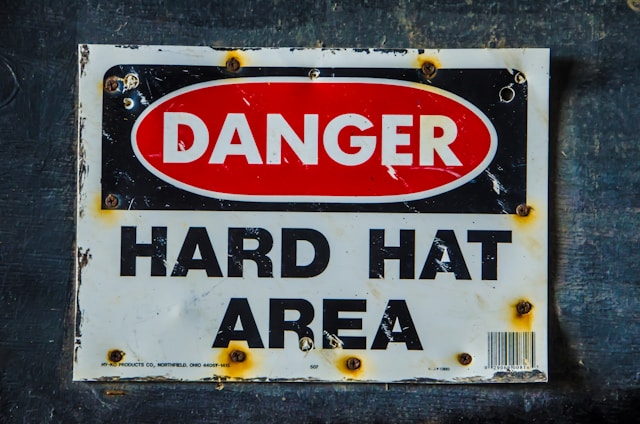Hazard identification very often fails because organizations are in fact unclear as to who should take the lead in the hazard identification activities. The identified hazardous conditions extend to every possible level in an organization, from workers at the frontline many of whom face risks daily to executives whose responsibilities include deciding on safety policies and allocating funds for these.

An understanding of how hazard identification can best be led may be the difference between a proactive safety culture and a reactive approach that only deals with issues after they develop into incidents.
Hazard identification is best handled through the integration of efforts and perspectives from different roles in the organization. Although management usually has ultimate responsibility, the most effective programs have leadership shared among several levels so as to create redundant safety nets to catch potential hazards before harm occurs.
In this distributed leadership model, it is assumed that there is no single person or role that can effectively identify all workplace hazards.
The modern workplace presents increasingly complex hazard profiles that demand sophisticated identification strategies. Some would argue that hazards cannot be identified by conventional means of formal safety inspections and thus arise from day-to-day operation, interaction with equipment, or human factors.
Hence, organizations have to put in place leadership structures that will adapt to these complexities yet have very clear accountability and ensure complete coverage.
The Multi-Layered Nature of Hazard Identification Leadership
Hazard identification leadership would better operate then in a multi-layered approach where different organizational levels are assigned responsibili ties, all with clear coordination mechanisms in place. In this structure, the hazards will be looked at from different viewpoints, and because of this, significant risks will hardly ever be missed owing to the blind spots of an individual or due to an individual’s limited exposure to a specific work area.
Senior management actually represents strategic decision-making leadership who contribute to the promulgation of policies, allocation of resources, and sedimentation of organizational cultures that contemplate hazard identification as a priority. Their role includes laying down expectation performance levels for hazard identification, assuring adequate training and resources, and demonstrating commitment through their personal involvement.
Middle management actually acts to turn strategic directions into operational reality by formulating specific procedures, coordinating interdepartmentally, and orient hazard identification undertakings toward broader business objectives. They are those crucial ties between strategic vision and frontline implementation and often serve as the entities that highlight systemic issues toward hazard creation.
Frontline supervisors provide such leadership for hazard identification as providing worksite observations on a regular basis, coaching employees on recognizing hazards, to qualify for adequate follow-through to those hazards whereby the supervisor knows the implementation intimately and may know of ongoing work processes that can contribute to new safety concerns.
Understanding Accountability in Hazard Assessment
The question of who is responsible for conducting a hazard assessment reveals the complex web of accountability that characterizes effective safety management. Legal responsibility rests with employers, who are obligated in a duty of care to ensure safe workplaces for their employees. However, from a more practical standpoint, a shared responsibility dispersed among several parties is recognized in its application, with each party contributing its own knowledge and skills to the assessments.
Organizational leaders are ultimately accountable for ensuring that hazard assessments are conducted systematically and thoroughly, including setting up assessment procedures, providing resources, and making sure that issues raised in assessments are given proper corrective action. In ensuring accountability for leadership, the key fact is that the requirements for assessments must be followed up with the leaders actively supporting the quality and effectiveness of the assessments.
Safety professionals may act as technical leaders in hazard assessment activities, bringing knowledge and skills in areas such as assessment techniques, regulatory requirements, and industry best practices. Their job is to develop assessment procedures, train other personnel, and ensure that the assessments are carried out legally and within acceptable professional standards. Their effectiveness, however, hinges upon support from operational personnel who know the particular work processes and conditions.
Although health and safety, hazard, or quality personnel may assess hazards and provide expertise on safety, operational managers and supervisors have a certain responsibility in ensuring that hazard assessments reflect actual workplace conditions and provide control measures that can actually be put into practice.
Their operational knowledge ensures that the assessment takes into account all factors that affect the hazards and that the control measures recommended may be put into effect without creating new hazards or operational difficulties.
Individual employees are bound to participate in hazard assessment exercises in good spirit; report hazards they have observed to be new or changed; and adhere to the prescribed procedures for the identification and reporting of hazards. The experiences they have with actual workplace conditions provide very valuable inputs into the assessment processes.
Hazard Identification and Risk Assessment Integration
Hazard identification programs are best when their application trunks act as inputs into a larger-HazardIdentification and Risk Assessment (HIRA) program that looks into the further aspects of evaluation and control of risks. This integration ensures that identification efforts translate into risk reduction rather than just generating lists of potential hazards.
In the HIRA integration, coordination must be established between the hazard personnel and risk assessors and those implementing controls. With clear handoff procedures guaranteeing proper evaluation of identified hazards and that the finding of the assessment feeds into the setting of priorities for identification in the future.
Documentation systems shall support the two activities, identification, and assessment, by capturing hazard information in a manner that may allow for the evaluation of risk and the design of corresponding controls. Through integration of documentation activities, trends may be analyzed, bringing to light patterns in the occurrence of hazards and their control.
Quality assurance activities check whether identification of hazards smoothly feeds risk assessment upon which the outcomes of risk assessment again feed into the improvement of identification.
Building Sustainable Identification Leadership
Sustainable leadership in hazard identification calls for leadership approaches that accommodate changing conditions and still ensure consistent performance in the long run. The sustainability factor is dependent on the development of multiple leaders at differing hierarchies within the organization rather than putting the entire weight on single persons or roles.
Succession planning will ensure that identification leadership skills will be continued if there is an occurrence of personnel changes. Key processes are documented; multiple persons are trained to handle the work; and institutional wisdom in the choice of good identification methods is maintained.
Culture development serves to instill identification leadership deep into the culture of organizations rather than view identification leadership as an added-on task. With identification engrained in an organization’s DNA, leadership comes about at all levels without concerted effort from management.
Sustaining Resources offers this identification leadership with support mechanisms that will nurture their existence until eternity while guaranteeing efficacy. These include budget allocations, staffing decisions, and investments in technology, which are in turn geared toward long-term development in identification capacity rather than short term compliance requirements.
Conclusion
Leadership style for effective hazard identification requires distributed approaches that capitalize on the various strengths of different organizational roles while maintaining clear accountability and co-ordination. The actual success is hinged on the engagement of multiply-level leadership, from top executives setting strategic directions to frontliners who face hazards in their everyday lives.
In opting to build identification leadership practices, organizations are, in effect, positioning themselves for proactive incident prevention as opposed to reacting to problems when they do occur. This investment into leadership will pay through lower incident rates, better load with regulation, and greater organizational resilience to the onset of risk and change of conditions.










Leave a Reply